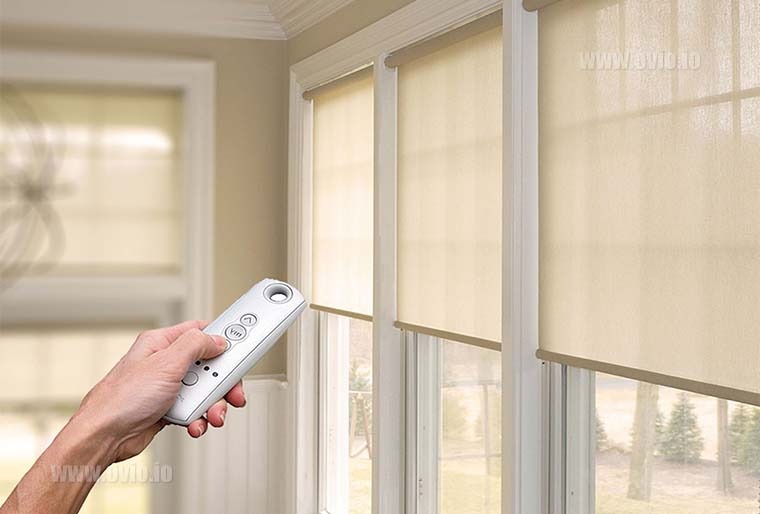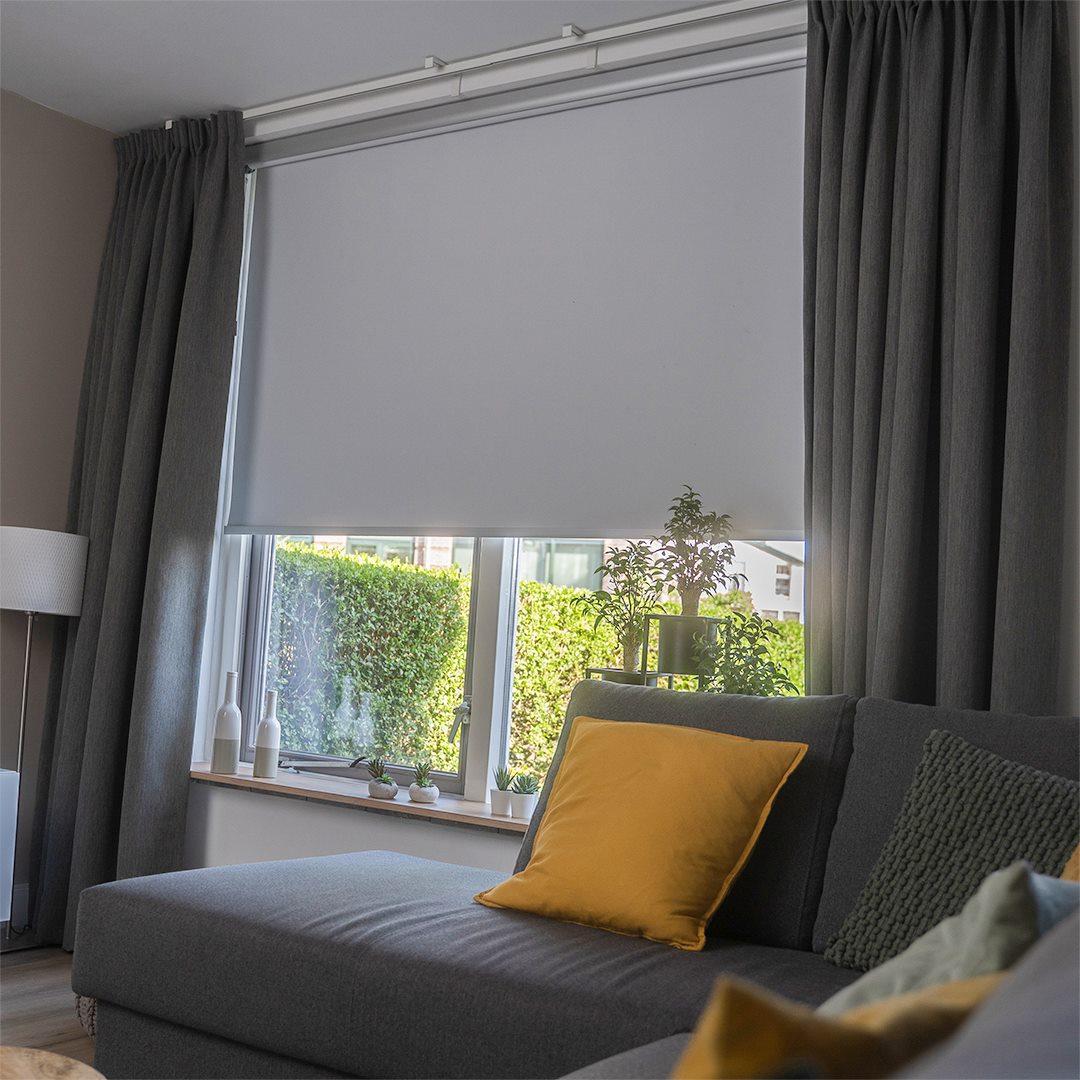Smart Blinds and Curtains: The Ultimate Guide to Home Automation

In an era where home automation is taking center stage, smart blinds and curtains are emerging as a key component of modern home décor and functionality. These intelligent window coverings not only enhance the aesthetic appeal of your space but also provide increased convenience, energy efficiency, and security. Imagine being able to control your blinds and curtains with a simple voice command, smartphone app, or preset schedule. This is just the beginning of what smart window treatments have to offer.
In this article, we’ll delve deep into smart blinds and curtains, how they work, the benefits they provide, and how to choose the best system for your home.
What Are Smart Blinds and Curtains?
Smart blinds and curtains are window coverings that can be controlled electronically using a variety of methods such as voice commands, mobile apps, or automation systems. They can be motorized to open or close at specific times or in response to environmental factors like sunlight or temperature. These intelligent systems can also be integrated with other smart home devices like thermostats, lighting, and security systems.
The key features of smart blinds and curtains include:
- Remote Control: Control your window coverings from anywhere using a smartphone app.
- Voice Control: Use voice commands via platforms like Amazon Alexa, Google Assistant, or Apple Siri to adjust your blinds.
- Automation: Set schedules or triggers to open/close your blinds at specific times or when certain conditions are met (e.g., sunrise, sunset, room temperature).
- Energy Efficiency: Some smart blinds can detect sunlight and adjust accordingly, helping you save on heating and cooling costs.
How Do Smart Blinds and Curtains Work?
Smart blinds and curtains typically operate using motors and wireless technology such as Wi-Fi, Bluetooth, or Z-Wave. Here’s an overview of how these systems work:
Motorized Mechanism
At the core of smart window coverings is a motorized mechanism that adjusts the blinds or curtains. These motors are powered by electricity or rechargeable batteries, and they are usually discreet and compact, so they don’t disrupt the appearance of your window coverings.
Wireless Connectivity
Smart blinds and curtains use wireless connectivity to interact with mobile apps, smart hubs, and voice assistants. Depending on the model, the connectivity could be through:
- Wi-Fi: Offers long-range control via a smartphone or app, often allowing remote access from anywhere.
- Bluetooth: A more local solution, where you can control your blinds when you’re within Bluetooth range (usually 30 feet).
- Z-Wave/Zigbee: Used for integration with broader smart home automation systems, allowing your blinds to sync with other devices.
Sensors and Automation
Some smart blinds come with built-in light sensors or temperature sensors. These sensors detect changes in the environment and adjust the blinds accordingly to optimize lighting, privacy, and energy efficiency. For example, blinds may close when the room gets too hot from direct sunlight or open when the temperature drops.
Benefits of Smart Blinds and Curtains
1. Convenience and Comfort
One of the most significant benefits of smart blinds and curtains is the convenience they offer. Gone are the days of manually opening and closing heavy curtains or fiddling with tangled cords. With smart window treatments, you can control your blinds with a simple touch of a button or even a voice command.
- Hands-Free Operation: Use voice commands to control your blinds, making it easier for people with mobility issues to adjust their window coverings.
- App Control: Whether you’re on the couch or away on vacation, you can open or close your blinds using a mobile app.

2. Energy Efficiency
Smart blinds and curtains play a crucial role in reducing your home’s energy consumption. By automatically adjusting based on the time of day or the amount of sunlight entering the room, they help maintain a consistent indoor temperature. For instance:
- Sunlight Sensors: Blinds can close during the hottest parts of the day, reducing the need for air conditioning and lowering cooling costs.
- Temperature Control: Some systems work with your smart thermostat to help regulate the room temperature by adjusting the window coverings in response to changing conditions.
This synergy between your blinds, thermostat, and other smart home devices leads to improved energy efficiency and potentially lower utility bills.
3. Enhanced Privacy and Security
Smart blinds can also enhance your home’s security and privacy. Many systems allow you to create custom schedules to open and close your blinds at specific times, even when you’re not at home. This feature can:
- Simulate Occupancy: Set the blinds to open and close at different times to make it appear as though someone is at home, deterring potential burglars.
- Privacy: Automatically close blinds in the evening to block the view of the inside of your home from outside.
4. Improved Aesthetics
Smart blinds and curtains are sleek and modern, adding a touch of elegance to your home. Whether you choose a minimalistic roller blind or luxurious drapes, these devices can complement your décor while providing the convenience of automation.
How to Choose the Best Smart Blinds and Curtains for Your Home
When selecting smart blinds and curtains, it’s essential to consider factors like your budget, home automation setup, and the specific needs of your space. Here are some key aspects to keep in mind:
1. Motor Type
Most smart blinds and curtains operate via motors, but the type of motor matters. Look for systems that have a silent motor for minimal disruption, especially in bedrooms or living rooms.
2. Connectivity
Consider the wireless technology that best fits your needs. For remote access, Wi-Fi-enabled smart blinds are ideal. If you’re looking to integrate your blinds into a broader home automation system, you may prefer a model that uses Z-Wave or Zigbee for compatibility with other devices like thermostats and security systems.
3. Power Source
Smart blinds typically come with two main power options: battery-powered or plug-in. Battery-powered options are more flexible and easier to install, while plug-in versions might be more reliable but may require access to power outlets.
4. Smart Home Integration
Ensure that the smart blinds you choose are compatible with your existing smart home ecosystem. Whether it’s Amazon Alexa, Google Assistant, or Apple HomeKit, ensure the blinds can easily integrate into your daily routine.
5. Design and Style
Smart blinds and curtains come in various designs, from simple roller blinds to elegant drapes. Make sure the design complements your room’s aesthetics. You can also choose between different materials that offer varying levels of light control, privacy, and insulation.
Popular Smart Blinds and Curtains
Here are a few popular smart blind and curtain options:
1. Lutron Serena Smart Shades
The Lutron Serena Smart Shades are among the most well-known smart window treatments. They offer a range of options, from roller shades to honeycomb shades, and are compatible with Amazon Alexa, Google Assistant, and Apple HomeKit.
- Features: Quiet motors, energy-efficient, customizable schedules.
2. Somfy Motorized Blinds
Somfy is a leading brand in motorized window treatments. Their smart blinds are highly customizable, offering both Wi-Fi and Z-Wave connectivity.
- Features: Integration with home automation systems, reliable performance.
3. IKEA Fyrtur Smart Blinds
IKEA’s Fyrtur smart blinds offer a budget-friendly solution for those seeking smart window coverings. They come with Zigbee connectivity, making them compatible with various home automation systems.
- Features: Simple app control, affordable pricing.

FAQs About Smart Blinds and Curtains
Q1: How do smart blinds save energy?
A1: Smart blinds help regulate your home’s temperature by blocking out sunlight when it’s too hot and letting light in during the colder months. This reduces the need for heating and cooling, leading to energy savings.
Q2: Can I install smart blinds myself?
A2: Yes, many smart blinds are designed for easy installation. However, if you opt for motorized blinds or want them to integrate with a home automation system, professional installation might be necessary.
Q3: Are smart blinds compatible with existing curtains?
A3: Smart blinds are typically separate from traditional curtains. However, you can install them alongside your curtains for added functionality, controlling the blinds while still enjoying the look of fabric drapes.
Conclusion
Smart blinds and curtains are an exciting addition to any modern home, offering convenience, energy efficiency, enhanced privacy, and improved aesthetics. Whether you’re looking to integrate them into your smart home system or simply add a touch of automation to your living space, these intelligent window treatments provide the perfect solution. With advancements in motorized blinds, app control, and voice integration, it’s easier than ever to control the amount of light and privacy in your home, all with a simple command.
Upgrade your
home today with smart blinds and curtains and experience the future of home automation!

